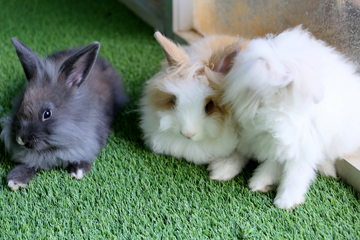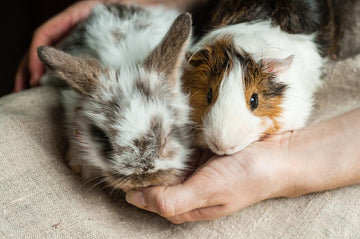Height Dangerous for Rabbits: Safety Tips
Rabbits are curious, playful, and full of energy. They hop, explore, and occasionally attempt to leap onto high surfaces. But did you know that height can be a dangerous hazard for rabbits? While they may look nimble, their bodies are not built to handle tall falls. A simple jump from a couch or bed can lead to severe injuries, including fractures or even spinal damage.
Click Here For a Beginners Guide to Rabbit Care.

Understanding why height is dangerous for rabbits is so important and can help you create a safe home for your furry friend. This blog will help you learn why rabbits are vulnerable, the injuries they can suffer from falls, and the steps you can take to keep them safe.
Why Rabbits Are Fragile
Rabbits may seem sturdy when they’re bounding and binking around, but their bodies are surprisingly delicate. One key reason is their lightweight skeleton. Unlike other animals, a rabbit’s bones are thin and brittle, making them prone to breaks. According to the National Library of Medicine, a rabbit’s skeleton makes up just 7-8% of its total body weight. This is not very much when you think about a human skeleton which makes up 15% of our weight.
Additionally, rabbits are not climbers by nature. Unlike cats, they lack the balance and flexibility needed to safely navigate high places. Their powerful hind legs are great for short jumps, but they cannot absorb the shock of a big fall. Even a drop of a few feet can result in broken bones, internal injuries, or worse.
Height Dangerous for Rabbits: Risks of Elevated Surfaces
One of the reasons why height dangers for rabbits is important to understand is that Rabbits love to explore, and are very curious. This often leads them to places they shouldn’t go. Whether it’s climbing onto furniture or attempting to jump down from your lap, these activities can result in serious accidents.

Here are some common injuries from a fall:
-
Fractures: Broken legs, pelvis, or even spine fractures are common injuries from falls.
-
Spinal Damage: A fall can cause severe damage to the spine, leading to paralysis. This is particularly dangerous because rabbits rely on their spine for movement and balance.
-
Internal Injuries: While less visible, falls can cause internal bleeding or organ damage. These injuries can be fatal without immediate veterinary attention.
Even when a fall seems minor, it’s important to monitor your rabbit closely. Injuries may not be immediately obvious, and symptoms like lethargy, loss of appetite, or limping could indicate a serious problem. If you notice anything unusual, consult your veterinarian right away.
How to Prevent Height Hazards
Rabbits depend on their owners to create a safe environment. Thankfully, there are simple changes you can make to protect your bunny from the dangers of height. Here’s how:
1. Block Access to Furniture
One of the easiest ways to prevent falls is to keep rabbits off high surfaces. Use barriers, baby gates, or playpens to block access to furniture. If your rabbit is free-roaming, consider supervising them in rooms where they could jump onto beds, couches, or tables.

2. Provide Ramps and Platforms
Rabbits enjoy climbing, but you can offer safer alternatives. Add ramps, pet stairs, or low platforms to their play area. These allow them to explore and exercise without the risks associated with higher surfaces. Make sure these additions are stable and non-slip to avoid accidents.
3. Cushion Potential Fall Zones
In areas where a fall might happen, add soft rugs, mats, or cushions to reduce the impact. For example, if your rabbit likes to jump on and off a couch, place a thick rug below it for added protection.
4. Supervise Playtime
While rabbits love to play independently, supervision is key to keeping them safe. Watch them closely when they’re active, especially in areas with high surfaces. This way, you can step in and prevent a dangerous leap.
5. Make Hutch Modifications
If your rabbit’s hutch has multiple levels, ensure it’s designed for safety. Use ramps and avoid open ledges. For more tips on building a safe hutch, visit our guide on what to consider before buying a hutch.
Recommended Heights for Rabbits to Be On Without Supervision

When it comes to keeping your rabbit safe, it’s essential to consider the heights they can handle without supervision. Ideally, rabbits should remain close to ground level whenever possible. Around 12 inches (about the height of a single step) is generally safe for unsupervised exploration. This height allows rabbits to hop up and down without putting stress on their delicate bones or risking a dangerous fall.
For rabbits that enjoy climbing, low platforms or ramps can be a safe as long as they have secure, non-slip surfaces. High Elevated areas should only be accessible with your supervision, especially if there are hard floors below. If you’re providing platforms or ramps in a multi-level hutch, ensure they have guardrails and are enclosed to prevent falls.
It’s also important to remember that even low heights can become dangerous if there’s a slippery surface or a sudden movement. Adding soft rugs or mats under any potential climbing areas can provide extra cushioning in case of an accident. Keeping your rabbit on safe, stable surfaces that are close to the ground is the best way to protect them from injuries related to falls.
What to Do If Your Rabbit Falls
Accidents happen, even in the safest environments. If your rabbit falls, stay calm and assess the situation. Look for any visible injuries, such as limping, bleeding, or swelling. Gently feel along their body to check for tenderness or pain.
After a fall, monitor your rabbit for behavioral changes. If they stop eating, show signs of lethargy, or struggle to move, seek veterinary care immediately. Need a rabbit emergency check off list? Check out PetMD "First Aid Kits for your Rabbit."
Height and Rabbits: Final Thoughts
Knowing the height dangerous for rabbits is a crucial aspect of rabbit care that is often overlooked. By understanding the risks of elevated surfaces, you can take steps to protect your rabbit from harm. Remember, rabbits are delicate creatures, and even a small fall can lead to significant injuries. Creating a safe, height-free environment ensures your bunny can hop, explore, and play without danger.

Fun and Unique Names for Rabbits

Healthy Rabbit Treats for Hoppy Pets






![RHDV2 Critical Information + Frequently Asked Questions [Updated 03/20/2025]](http://www.rabbitholehay.com/cdn/shop/articles/rhdv2-critical-information-frequently-asked-questions-V1.png?v=1742490107&width=360)

